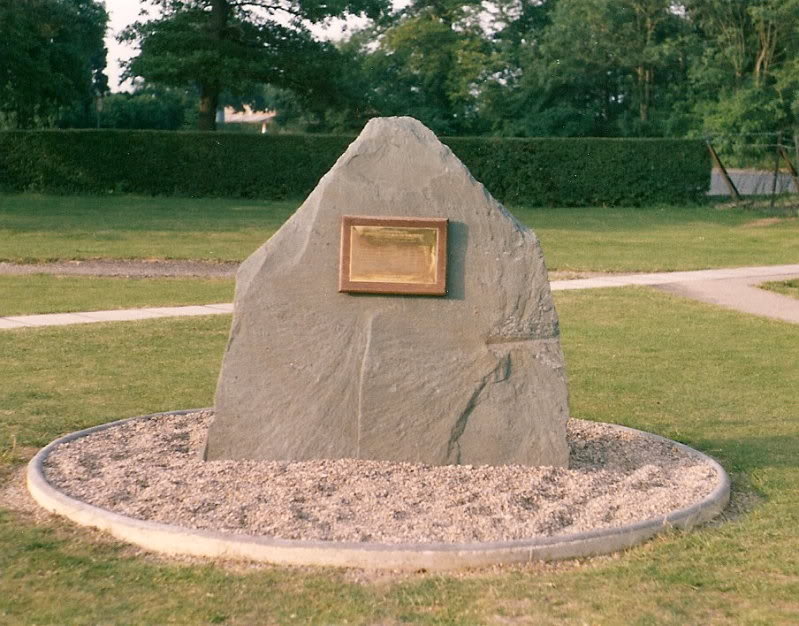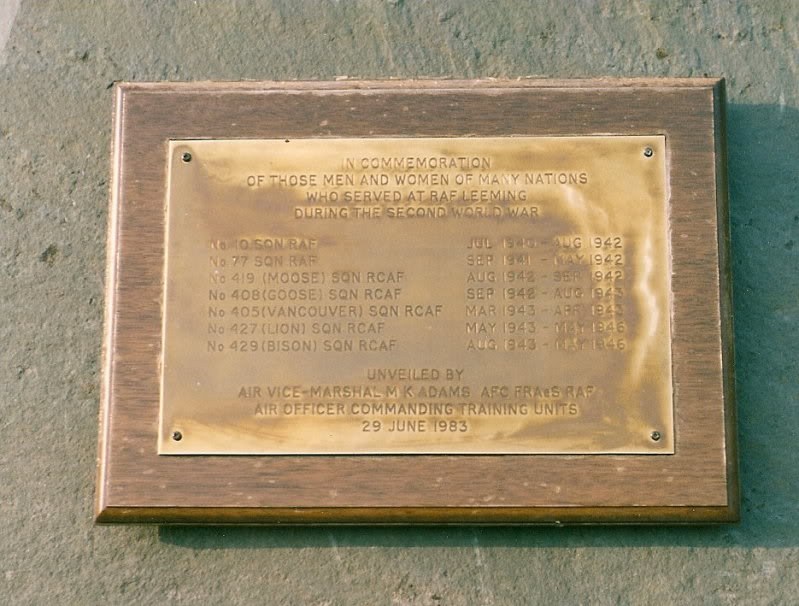Hallam, George Theodore
Personal Information
| Rank | F/S |
| Forename(s) | George Theodore |
| Surname | Hallam |
| Gender | M |
| Age | 25 |
| Date of Death | 23-10-1944 |
| Next of Kin | Son of George Arthur Hallam and Helen Gertrude Hallam (née Preece), of Calgary, Alberta, Canada. |
Aircraft Information
| Aircraft | Handley Page Halifax III |
| Serial Number | MZ906 |
| Markings | AL-H |
Memorial Information
| Burial/Memorial Country | United Kingdom |
| Burial/Memorial Place | Runnymede Memorial |
| Grave Reference | Panel 254. |
| Epitaph |
IBCC Memorial Information
| Phase | 2 |
| Panel Number | 175 |
Enlistment Information
| Service Number | R/258208 |
| Service | Royal Canadian Air Force |
| Group | 6 |
| Squadron | 429 (Bison) |
| Squadron Motto | Fortunae nihil (Nothing to chance) |
| Trade | Air Gunner |
| Country of Origin | Canada |
Other Memorials
| Location | Roman Rd, Leeming, North Yorkshire |
| Country | United Kingdom |
| Memorial Type | Brass plaque set into a stone plinth into which is carved with the Canadian maple leaf and the Yorkshire rose. |
| Memorial Text | This memorial is dedicated to those men and women who served at RAF Leeming during World War II, including those from the Royal Canadian Air Force Squadrons, whose members came from all parts of the Commonwealth from 1942 to 1945; 405 Vancouver, 408 Goose |
| Location | Opposite old Main Guardroom, RAF Leeming, North Yorkshire |
| Country | United Kingdom |
| Memorial Type | Stone Memorial & Metal Plaques |
| Memorial Text | In commemoration of those men and women of many nations who served at RAF Leeming during the second world war. |
Miscellaneous Information
| George was born on 24 October 1918 at Calgary, Alberta. His father was born in England and worked as a Public stenographer and his mother was also born in Nottinghamshire, England. He had two brothers Eugene and Byron and also two married sisters. The schools he attended were McDougal. 1928-1936 and Western Canada High 1936-1939 (motor, metal and typing). He also attended Garbutt Business College for about a year (all in Calgary). The sports he took part in were skating and swimming. George worked at various odd jobs between 1939-1940 and then as a Bell Hop at the Hotel York between 1940-1943. |
| He enlisted on 8 June 1943 and after training was posted to the U.K.embarking from Halifax on 5 March 1944. After arrival at 3PRC on 15 March he went to 22 OTU 4 April 1944, 61 Base 21 June 1944 and 429 Squadron on 23 July 1944. George was to sadly lose his life on 23 October 1944. |
Commonwealth War Graves Commission
The National Archives
| Record of Events (Operational Record Book) AIR 27/1853/20 |
| Summary of Events (Operational Record Book) AIR 27/1853/19 |
Fellow Servicemen
Please note that this list gives all the losses aboard the quoted aircraft and occasionally these may have occurred on an earlier date when the aircraft was not itself lost. Please check the dates of death carefully.
Last Operation Information
| Start Date | 23-10-1944 |
| End Date | 23-10-1944 |
| Takeoff Station | Leeming |
| Day/Night Raid | Day |
| Operation | Essen. 1055 aircraft- a record and yet remarkably 5 Group was not called upon at all. This was the heaviest raid on Essen so far. 8 losses (0.76%). 4538 tons of bombs were dropped, most of which were high explosives since it was considered that there was little left to burn in the target area. 607 buildings were destroyed and 812 seriously damaged. 662 people were killed. |
| Reason for Loss | Lost without trace |



